Soil bags for bigger carrots? Absolutely! Who wouldn’t want plump, juicy carrots bursting with flavor straight from their own backyard? Let’s be honest, sometimes our garden soil just doesn’t cut it, leaving us with stunted, misshapen carrots that are more sad than satisfying. But fear not, fellow gardening enthusiasts, because I’m about to share a game-changing DIY trick that will have you harvesting impressive carrots in no time!
The beauty of growing your own food is deeply rooted in human history. For centuries, civilizations have cultivated the land, nurturing crops for sustenance and connection to nature. While carrots may not have always been the vibrant orange we know today (they were originally purple and yellow!), their cultivation dates back thousands of years. Now, we can take that legacy and elevate our carrot-growing game with a simple, effective technique.
This DIY method using soil bags for bigger carrots is perfect for those with limited space, poor soil quality, or simply a desire to maximize their carrot yield. Imagine the satisfaction of pulling out perfectly formed, sweet carrots that you grew yourself, all thanks to this easy-to-implement hack. No more disappointing harvests! I’m excited to show you how to create the ideal growing environment for your carrots, ensuring they have the space and nutrients they need to thrive. Get ready to impress your friends and family with your bountiful carrot harvest!
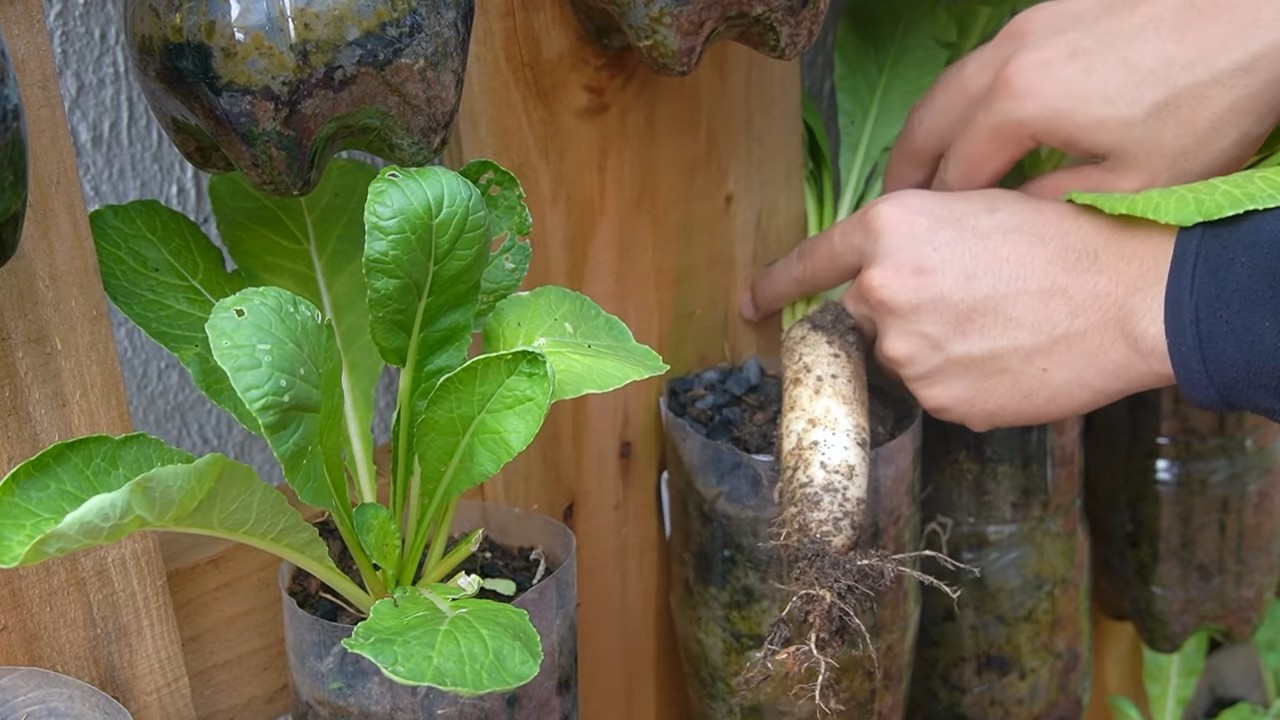
DIY: Karotten-Boost mit selbstgemachten Pflanzsäcken aus Erde
Hallo liebe Gartenfreunde! Wer träumt nicht von knackigen, langen Karotten aus dem eigenen Garten? Oft scheitert es aber am Boden, der zu steinig, zu lehmig oder einfach zu flach ist. Aber keine Sorge, ich zeige euch heute, wie ihr mit einem einfachen DIY-Trick eure Karotten zum Wachsen bringt – und zwar mit selbstgemachten Pflanzsäcken aus Erde! Diese Methode ist super einfach, kostengünstig und ermöglicht es euch, auch auf kleinstem Raum oder sogar auf dem Balkon, prächtige Karotten zu ernten.
Warum Pflanzsäcke für Karotten?
* Tiefer Boden: Karotten brauchen tiefen, lockeren Boden, um sich optimal entwickeln zu können. Pflanzsäcke ermöglichen es, diese idealen Bedingungen zu schaffen, auch wenn der Gartenboden nicht optimal ist.
* Bessere Drainage: In Pflanzsäcken kann das Wasser besser ablaufen, was Staunässe verhindert und Wurzelfäule vorbeugt.
* Weniger Unkraut: Durch die Verwendung von Pflanzsäcken reduziert sich der Unkrautdruck erheblich, da die Erde im Sack sauberer ist als im Gartenbeet.
* Flexibilität: Pflanzsäcke sind mobil! Ihr könnt sie leicht verschieben, um die Karotten optimal mit Sonnenlicht zu versorgen.
* Platzsparend: Ideal für kleine Gärten, Balkone oder Terrassen.
Was ihr für eure Karotten-Pflanzsäcke braucht:
* Erde: Hochwertige Gemüseerde ist das A und O. Ich empfehle eine Mischung aus Gartenerde, Kompost und Sand, um eine gute Drainage und Nährstoffversorgung zu gewährleisten.
* Säcke: Stabile Jutesäcke, Kartoffelsäcke oder auch große Müllsäcke (die schwarzen, blickdichten) eignen sich hervorragend. Achtet darauf, dass sie reißfest sind.
* Schere oder Messer: Zum Zuschneiden der Säcke, falls nötig.
* Gießkanne oder Schlauch: Zum Bewässern der Karotten.
* Karottensamen: Wählt eine Sorte, die euch schmeckt und für euren Standort geeignet ist.
* Optional: Drainagematerial (Kies, Blähton) für den Boden der Säcke.
* Optional: Langzeitdünger für Gemüse (z.B. Hornspäne)
Schritt-für-Schritt-Anleitung: Karotten-Pflanzsäcke selber machen
1. Säcke vorbereiten:
* Wenn ihr Jutesäcke oder Kartoffelsäcke verwendet, könnt ihr sie direkt so nutzen.
* Bei Müllsäcken: Schneidet die Säcke auf die gewünschte Höhe zu. Ich empfehle eine Höhe von mindestens 60 cm, damit die Karotten genügend Platz zum Wachsen haben. Achtet darauf, dass die Säcke stabil stehen können. Ihr könnt sie auch in einen alten Eimer oder eine Wanne stellen, um ihnen mehr Halt zu geben.
* Wichtig: Stecht am Boden der Säcke ein paar Löcher, damit das Wasser ablaufen kann. Das verhindert Staunässe.
2. Drainage einfüllen (optional):
* Füllt eine Schicht Drainagematerial (Kies, Blähton) von ca. 5-10 cm Höhe in den Boden der Säcke. Das verbessert die Drainage zusätzlich und verhindert, dass die Erde direkt am Boden der Säcke liegt.
3. Erde mischen:
* Mischt eure Erde gründlich durch. Ich verwende meistens ein Verhältnis von 1/3 Gartenerde, 1/3 Kompost und 1/3 Sand. Der Kompost sorgt für Nährstoffe, der Sand für eine gute Drainage.
* Wenn ihr möchtet, könnt ihr jetzt auch Langzeitdünger (z.B. Hornspäne) unter die Erde mischen. Das versorgt die Karotten während der gesamten Wachstumsperiode mit Nährstoffen.
4. Säcke befüllen:
* Füllt die Säcke mit der vorbereiteten Erde. Lasst oben einen Rand von ca. 5-10 cm frei.
* Drückt die Erde leicht an, aber nicht zu fest. Sie sollte locker und luftig bleiben.
5. Aussaat:
* Befeuchtet die Erde in den Säcken gründlich mit einer Gießkanne oder einem Schlauch.
* Sät die Karottensamen gemäß den Anweisungen auf der Saatguttüte aus. Ich säe die Samen meistens in Reihen mit einem Abstand von ca. 5 cm.
* Bedeckt die Samen mit einer dünnen Schicht Erde (ca. 0,5 cm).
* Gießt die Erde nochmals vorsichtig an.
6. Standort wählen:
* Stellt die Pflanzsäcke an einen sonnigen Standort. Karotten brauchen mindestens 6 Stunden Sonne pro Tag, um optimal zu wachsen.
7. Pflege:
* Gießen: Haltet die Erde in den Säcken immer feucht, aber nicht nass. Gießt regelmäßig, besonders bei trockenem Wetter.
* Düngen: Wenn ihr keinen Langzeitdünger verwendet habt, könnt ihr die Karotten während der Wachstumsperiode regelmäßig mit Flüssigdünger düngen.
* Unkraut jäten: Entfernt regelmäßig Unkraut, das in den Säcken wächst.
* Vereinzeln: Wenn die Karottenpflänzchen zu dicht stehen, müsst ihr sie vereinzeln. Lasst zwischen den einzelnen Pflanzen einen Abstand von ca. 3-5 cm. Die entfernten Pflänzchen könnt ihr vorsichtig umpflanzen oder einfach essen (Karottengrün ist essbar!).
Zusätzliche Tipps für eine reiche Karottenernte:
* Sortenwahl: Wählt Karottensorten, die für euren Standort und eure Bodenverhältnisse geeignet sind. Es gibt kurze, runde Sorten, die sich gut für schwere Böden eignen, und lange, schlanke Sorten, die tiefen, lockeren Boden bevorzugen.
* Fruchtfolge: Baut Karotten nicht jedes Jahr am selben Standort an. Eine Fruchtfolge mit anderen Gemüsearten (z.B. Salat, Kohl, Zwiebeln) hilft, Krankheiten und Schädlinge zu vermeiden.
* Mischkultur: Pflanzt Karotten in Mischkultur mit anderen Pflanzen, die sie vor Schädlingen schützen. Ringelblumen, Knoblauch und Zwiebeln sind gute Nachbarn für Karotten.
* Schutz vor Schädlingen: Karottenfliegen können eine echte Plage sein. Schützt eure Karotten mit einem Insektenschutznetz.
* Ernte: Die Erntezeit hängt von der Sorte und dem Aussaatzeitpunkt ab. In der Regel sind Karotten nach ca. 2-3 Monaten erntereif. Zieht die Karotten vorsichtig aus der Erde.
Häufige Probleme und Lösungen:
* Krumme Karotten: Krumme Karotten entstehen oft durch Steine oder andere Hindernisse im Boden. Sorgt für einen lockeren, steinfreien Boden.
* Kleine Karotten: Kleine Karotten können verschiedene Ursachen haben: zu wenig Sonne, zu wenig Wasser, zu wenig Nährstoffe oder zu dichter Stand. Achtet auf die richtige Pflege und vereinzeln die Pflanzen rechtzeitig.
* Karottenfliegenbefall: Karottenfliegen legen ihre Eier in die Erde und die Larven fressen an den Karottenwurzeln. Schützt eure Karotten mit einem Insektenschutznetz.
* Wurzelfäule: Wurzelfäule entsteht durch Staunässe. Sorgt für eine gute Drainage und gießt nicht zu viel.
Fazit
Mit diesen selbstgemachten Pflanzsäcken aus Erde könnt ihr eure Karotten ganz einfach zum Wachsen bringen – egal ob im Garten, auf dem Balkon oder der Terrasse. Probiert es aus und freut euch auf eine reiche Ernte an knackigen, selbstgezogenen Karotten! Ich wünsche euch viel Erfolg und Spaß beim Gärtnern! Und denkt daran: Gärtnern ist nicht nur ein Hobby, sondern auch eine Leidenschaft!
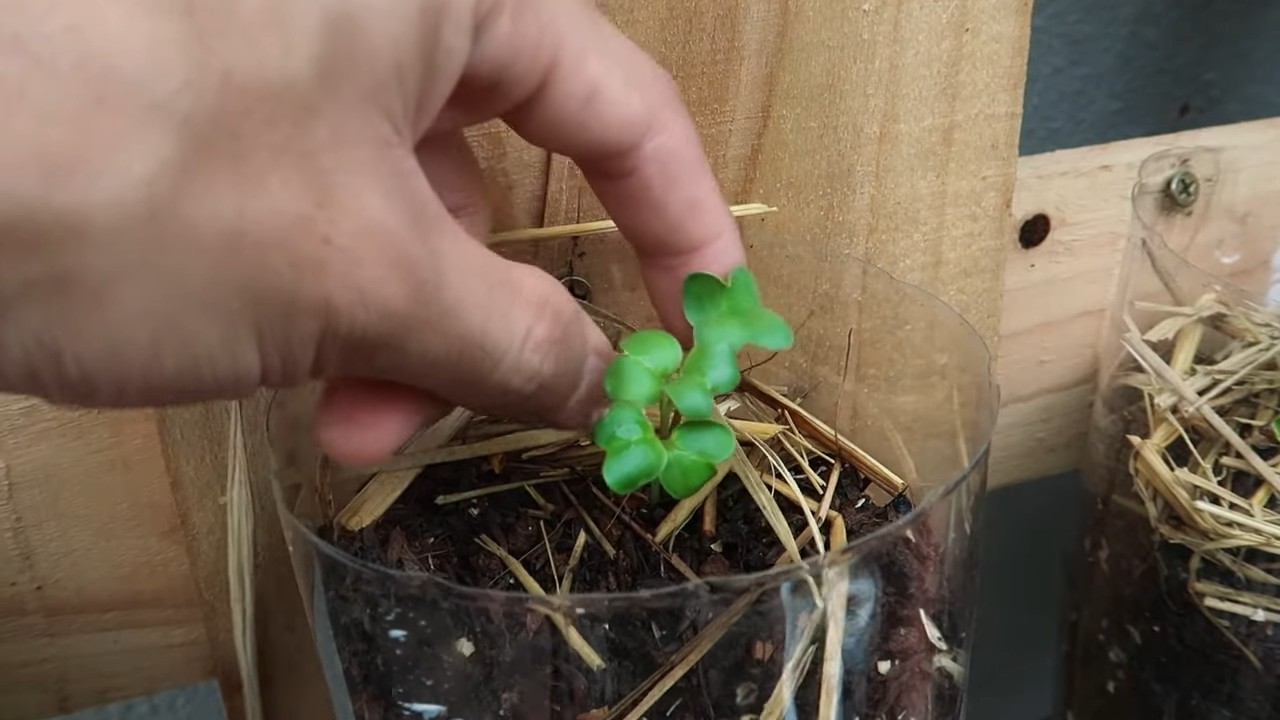
Conclusion
So, there you have it! Creating your own soil bags for bigger carrots isn’t just a clever gardening hack; it’s a game-changer for anyone serious about growing impressive, healthy root vegetables. We’ve walked through the simple steps, highlighted the benefits, and hopefully, inspired you to ditch the traditional in-ground planting method, at least for a portion of your carrot crop.
Why is this a must-try? Because it addresses the core challenges of carrot cultivation head-on. Rocky, compacted soil? No problem! Poor drainage? Solved! Short, stubby carrots? A thing of the past! By providing a controlled environment with perfectly loose, nutrient-rich soil, you’re giving your carrots the best possible chance to thrive. You’re essentially creating a custom-designed spa for your root vegetables, allowing them to stretch and grow to their full potential without any of the usual obstacles.
But the beauty of this DIY project lies in its adaptability. Feel free to experiment with different soil mixes. Try adding more compost for an extra boost of nutrients, or incorporate some sand for even better drainage. You could even try different bag sizes to see how they affect the overall size and shape of your carrots. Consider using fabric grow bags instead of plastic for improved aeration and drainage. This is your chance to get creative and tailor the method to your specific needs and preferences.
Don’t limit yourself to just carrots, either! This technique can be adapted for other root vegetables like parsnips, radishes, and even potatoes. The principles remain the same: provide loose, well-drained soil in a contained environment, and watch your vegetables flourish.
We’re confident that once you try this method, you’ll be amazed by the results. Imagine pulling up carrots that are long, straight, and bursting with flavor. Imagine the satisfaction of knowing that you created the perfect growing conditions for them. Imagine the envy of your gardening friends when they see your impressive harvest!
So, grab some soil, some bags, and some carrot seeds, and get started today. Don’t be afraid to experiment, tweak, and personalize the process. And most importantly, don’t forget to share your experiences with us! We’d love to hear about your successes, your challenges, and any variations you’ve tried. Post pictures of your impressive carrot harvest on social media and tag us! Let’s create a community of gardeners who are passionate about growing the best possible root vegetables. Let’s revolutionize the way we grow carrots, one soil bag at a time. Embrace the power of DIY soil bags for bigger carrots and unlock your gardening potential!
Frequently Asked Questions (FAQ)
What kind of soil should I use for my soil bags?
The ideal soil mix for your carrot soil bags should be loose, well-draining, and rich in organic matter. A good starting point is a mix of equal parts compost, potting soil, and sand. The compost provides essential nutrients, the potting soil offers a good base for root growth, and the sand ensures proper drainage. Avoid using heavy clay soil, as it can compact and restrict root growth. You can also add some slow-release fertilizer to the mix for an extra boost of nutrients. Experiment with different ratios to find what works best for your specific climate and soil conditions.
What size bags should I use?
The size of the bags will depend on the variety of carrots you’re growing. For shorter, rounder varieties, smaller bags (around 12-18 inches deep) will suffice. However, for longer, more slender varieties, you’ll need deeper bags (at least 24 inches deep) to allow the roots to grow to their full potential. The diameter of the bag should be at least 8-10 inches to provide enough space for the carrots to develop. Remember, the deeper the bag, the longer your carrots can grow.
How often should I water my soil bags?
Watering frequency will depend on the weather conditions and the type of soil you’re using. Generally, you should water your soil bags whenever the top inch of soil feels dry to the touch. Avoid overwatering, as this can lead to root rot. Ensure that the bags have adequate drainage to prevent water from pooling at the bottom. During hot, dry weather, you may need to water more frequently. A good rule of thumb is to check the moisture level of the soil daily and water as needed.
Can I reuse the soil bags?
Yes, you can reuse the soil bags, but it’s important to properly prepare them before replanting. After harvesting your carrots, remove any remaining plant debris and roots from the soil. Amend the soil with fresh compost and fertilizer to replenish the nutrients that were used by the previous crop. If you’re using plastic bags, make sure they are clean and free of any holes or tears. Fabric grow bags can be washed and reused for several seasons.
What if I don’t have access to soil bags? Can I use something else?
While soil bags are ideal, you can use other containers as well. Large pots, buckets, or even repurposed containers like old tires or plastic bins can work. The key is to ensure that the container is deep enough to accommodate the carrot roots and has adequate drainage. You can also create your own DIY soil bags using burlap sacks or heavy-duty plastic sheeting. Just make sure to punch holes in the bottom for drainage.
How do I prevent pests and diseases in my soil bags?
To prevent pests and diseases, start with healthy, disease-free seeds. Use a high-quality soil mix that is free of pathogens. Practice good sanitation by removing any dead leaves or plant debris from the bags. Monitor your plants regularly for signs of pests or diseases. If you spot any problems, treat them promptly with organic pest control methods or fungicides. Crop rotation can also help to prevent the buildup of soilborne diseases.
Can I grow carrots in soil bags in a small space, like a balcony or patio?
Absolutely! One of the biggest advantages of using soil bags is that they are perfect for small-space gardening. You can easily grow carrots on a balcony, patio, or even a small backyard. Just make sure that the bags receive at least 6-8 hours of sunlight per day. You can also move the bags around to maximize sunlight exposure. Soil bags are a great way to enjoy fresh, homegrown carrots even if you don’t have a traditional garden.
What are the best carrot varieties to grow in soil bags?
Many carrot varieties thrive in soil bags. Nantes varieties, such as ‘Nantes Half Long’ and ‘Scarlet Nantes,’ are popular choices because they are relatively short and straight. Danvers varieties, such as ‘Danvers 126,’ are also a good option. For something different, try growing ‘Parisian’ carrots, which are small and round. Experiment with different varieties to find your favorites.
How do I know when my carrots are ready to harvest?
Carrots are typically ready to harvest when they reach the desired size and color. Check the seed packet for the expected maturity date. You can also gently dig around the top of the carrot to check its size. The tops of the carrots should be visible above the soil line. To harvest, simply pull the carrots out of the soil bags. If the soil is dry, you may need to water it first to make it easier to pull the carrots.
What if my carrots are forking or splitting?
Forking or splitting carrots can be caused by several factors, including rocky soil, uneven watering, and excessive nitrogen in the soil. To prevent forking, make sure your soil mix is free of rocks and debris. Water your soil bags consistently to maintain even moisture levels. Avoid over-fertilizing with nitrogen-rich fertilizers. If you notice your carrots are forking, try thinning them out to give them more space to grow.

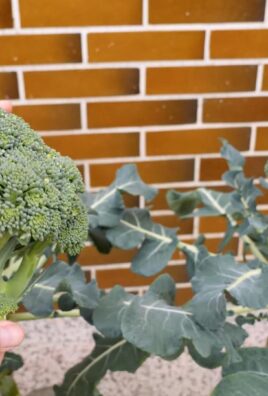
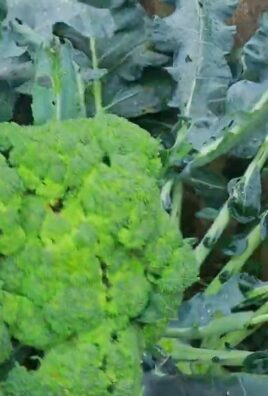
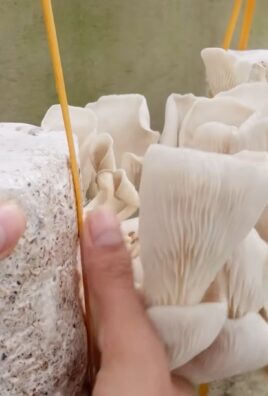
Leave a Comment